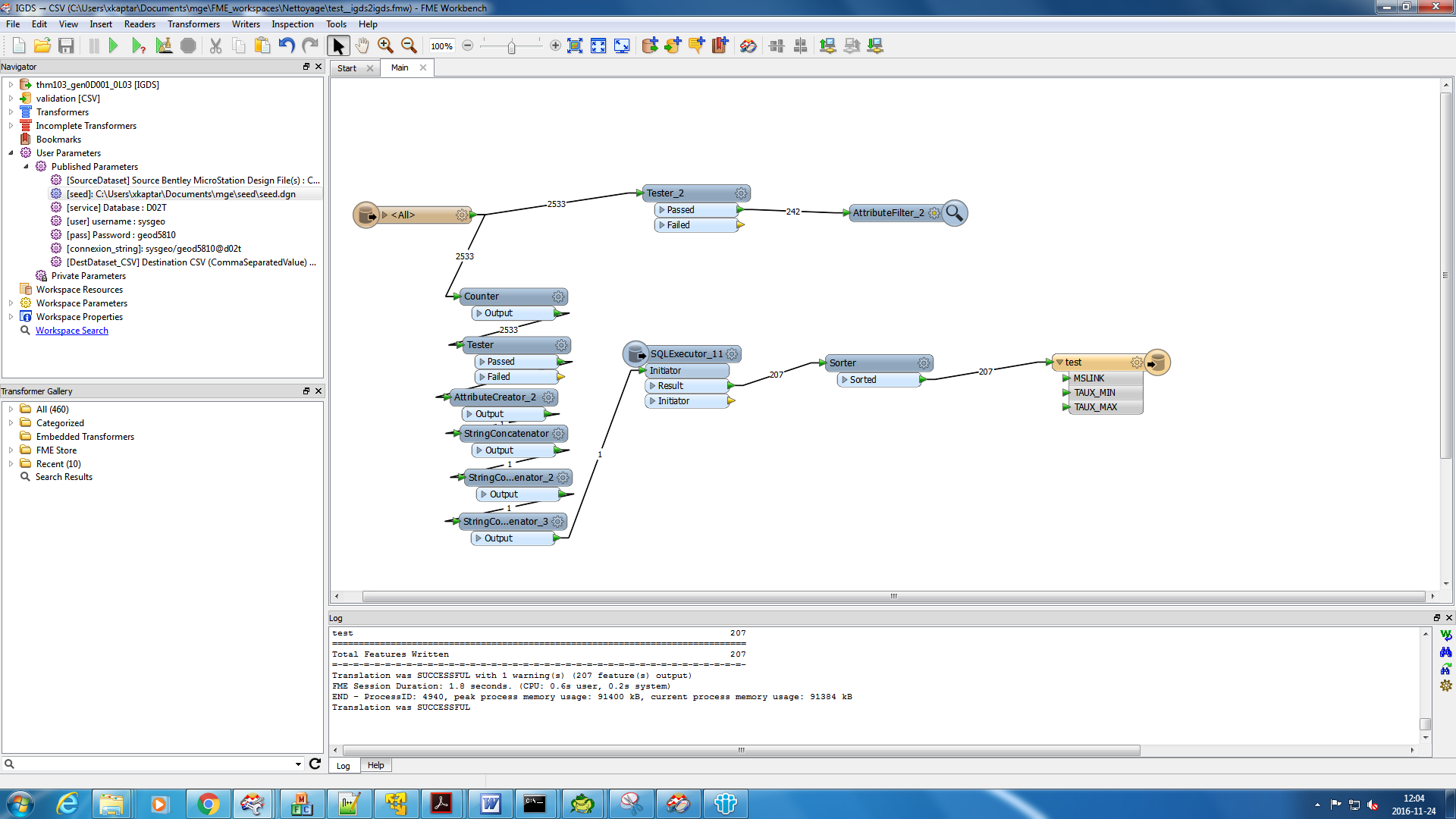Hi all,
I have a dgn file (let's say old_dgn) which is linked to an oracle database (let's say table_dgn).
Because some centroids are missing, I created a new dgn file (let's say new_dgn) that contains all the existing features of the old file and also the new centroides.
Now I would like to write a workspace that will:
(1) detect the centroids without linkage with the oracle table table_dgn
(2) create the linkage in case some centroids were found in step (1). This means update also the oracle table table_dgn.
The oracle table table_dgn has a column mslink which corresponds to mslink1 of the file new_dgn.
Any suggestions?






